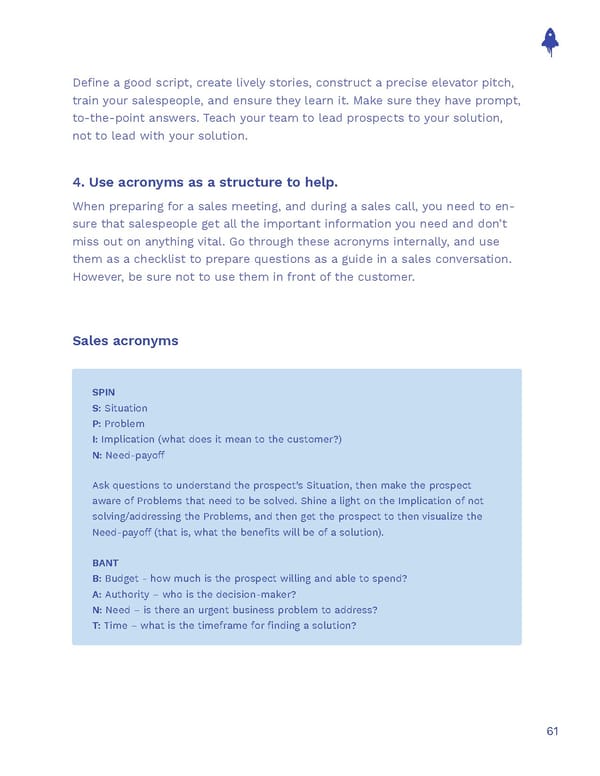Define a good script, create lively stories, construct a precise elevator pitch, train your salespeople, and ensure they learn it. Make sure they have prompt, to-the-point answers. Teach your team to lead prospects to your solution, not to lead with your solution. 4. Use acronyms as a structure to help. When preparing for a sales meeting, and during a sales call, you need to en- sure that salespeople get all the important information you need and don’t miss out on anything vital. Go through these acronyms internally, and use them as a checklist to prepare questions as a guide in a sales conversation. However, be sure not to use them in front of the customer. Sales acronyms SPIN S: Situation P: Problem I: Implication (what does it mean to the customer?) N: Need-payoff Ask questions to understand the prospect’s Situation, then make the prospect aware of Problems that need to be solved. Shine a light on the Implication of not solving/addressing the Problems, and then get the prospect to then visualize the Need-payoff (that is, what the benefits will be of a solution). BANT B: Budget - how much is the prospect willing and able to spend? A: Authority – who is the decision-maker? N: Need – is there an urgent business problem to address? T: Time – what is the timeframe for finding a solution? 61
 The Sales Operations Playbook Page 60 Page 62
The Sales Operations Playbook Page 60 Page 62